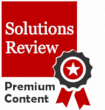
This is part of Solutions Review’s Premium Content Series, a collection of contributed columns written by industry experts in maturing software categories. In this submission, Flexera Director of Cloud Market Strategy Brian Adler compares FinOps vs. ITAM so you know the difference.
 The FinOps discipline—cloud financial management—is maturing. Originally focused on cloud cost management and optimization for infrastructure-as-a-service (IaaS) and platform-as-a-service (PaaS), the financial management practices of FinOps are expanding into other areas of the IT estate.
The FinOps discipline—cloud financial management—is maturing. Originally focused on cloud cost management and optimization for infrastructure-as-a-service (IaaS) and platform-as-a-service (PaaS), the financial management practices of FinOps are expanding into other areas of the IT estate.
Many FinOps teams are familiar with enhancing the spend efficiency of their cloud infrastructure resources, but far less so with regard to the software that’s running on those resources and the licensing restrictions associated with that software. Because of this, as FinOps usage expands, it necessitates the inclusion of IT asset management (ITAM). ITAM practitioners bring years of knowledge and experience on software license mobility to the FinOps discipline, further enhancing efficient cloud spend.
Collaboration between FinOps and ITAM practitioners can deliver value as across IT. Consider these best practices for a valuable partnership:
FinOps vs. ITAM
The FinOps Approach
FinOps teams help organizations analyze and reduce their cloud costs by relying on manual and automated policies. Policies can be used, for example, to identify underutilized discounts from cloud providers, rightsize instances, shut down workloads after hours, and strengthen software license compliance initiatives.
The FinOps operating model relies on three phases:
- Inform: With a focus on visibility and allocation, this phase concentrates on cost visibility across all clouds; currency conversion; chargeback and showback; allocation of costs to relevant dimensions; benchmarking; and budgeting, forecasting, and anomaly detection.
- Optimize: This phase focuses on cloud cost utilization and usage rates. Both the amount of usage (i.e., rightsizing, lights on/off policies, zombie infrastructure, unused volumes, or public IP addresses) and the price (i.e., enterprise discounts, committed use discounts, reserved instances, or storage tiers) are evaluated.
- Operate: In this phase, FinOps practitioners focus on the continuous improvement of operations. Priorities include defining and executing processes to achieve optimization goals; establishing appropriate metrics and key performance indicators (KPIs); automation and integration of operations; and evaluating unit economics.
The Role of ITAM
ITAM professionals are focused on maximizing the value of investments in technology. Identifying the hardware (hardware asset management, HAM), software (software asset management, SAM), and IT asset disposition (ITAD) of their IT ecosystem helps drive improved decisions. This is particularly important in hybrid environments that include on-premises, cloud, and SaaS technologies.
ITAM teams work closely with other functional areas in an organization, such as infrastructure and IT service management, as shown in the Flexera 2022 State of ITAM Report. ITAM can aid decisions about cloud migration, cloud cost optimization, license compliance, rightsizing and reclaiming licenses, and application rationalization.
Today, with public cloud spend—and wasted cloud spend—growing, it’s no surprise that optimizing the existing use of cloud (cost savings) is the top cloud initiative, as found in the Flexera 2022 State of the Cloud Report. To help achieve this, the majority of organizations (71 percent) have either a cloud center of excellence (CCOE) or a central cloud team, focused on governance and culture, while prioritizing collaboration and providing centralized tools and controls. Some of the top metrics for assessing progress against cloud goals include cost efficiency/savings (reported by 74 percent) and cost avoidance (48 percent).
Applying the three phases of the FinOps lifecycle to aid ITAM in the cloud takes the form of:
- Inform: An ITAM approach prioritizes obtaining visibility into license usage and entitlements for the cloud, including virtual machines (VMs), containers, PaaS services, and considering bare metal infrastructure.
- Optimize: Optimization efforts include leveraging bring-your-own-license (BYOL) options to reduce cloud infrastructure costs, connecting the instance lifecycle state with compliance calculations, and managing the risk of compliance based on cloud inventory. ITAM can help FinOps practices by optimizing license considerations across cloud vendors (with considerations specific to Amazon Web Services, Microsoft Azure, and Google Cloud Platform) and for containers.
- Operate: Gaining clarity into the ever-changing licensing landscape is a priority at this stage, where continuous evaluation and automation are necessary.
Next Steps for FinOps and ITAM
FinOps and ITAM practitioners can integrate their efforts by focusing on how they’re informed about their initiatives, how they optimize their programs, and how they improve operations, as shown below:
FinOps Practitioners vs. ITAM Practitioners
FinOps:
- Inform: Ensure visibility into consumption, with respect to licensing (BYOL, VMs, bare metal infrastructure, containers). Know what’s running in cloud/containers. Understand licensing models available for on-premises agreements and cloud contracts (e.g., for software assurance, license mobility)
- Optimize: Review entitlements and contracts that could be leveraged to optimize cloud spend and license position. Evaluate how to make the best use of existing entitlements and ensure compliance.
- Operate: Assess what tooling, processes, or automation are available to manage license position on an ongoing basis. Prioritize real-time visibility.
ITAM:
- Inform: Know what’s running in cloud/containers. Understand licensing models available for on-premises agreements and cloud contracts (e.g., for software assurance, license mobility)
- Optimize: Evaluate how to make the best use of existing entitlements and ensure compliance.
- Operate: Assess the ability to operate at scale and in near time. Determine how to measure and report on success.
By adopting a common language and by aligning goals across its people, processes, and technology, an organization can strengthen its hybrid IT environment while increasing the value of its investments. The approach helps unite the goals not only of FinOps and ITAM practitioners, but of lines of business, engineers and architects, and operations, security, and finance teams.
The post FinOps vs. ITAM; What’s the Difference? – Solutions Review appeared first on Best Enterprise Cloud Strategy Tools, Vendors, Managed Service Providers, MSP and Solutions.